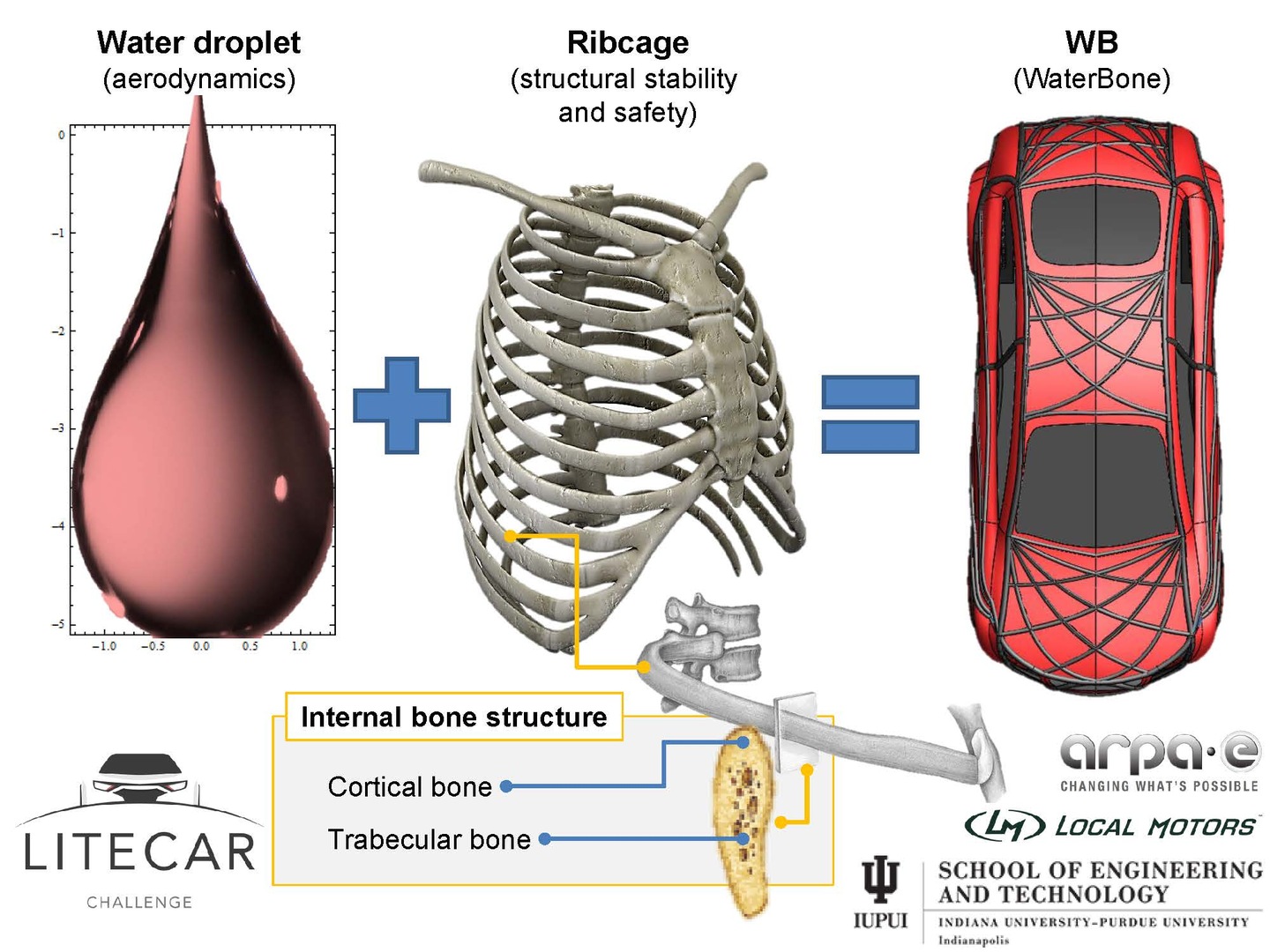
ARPA-E LITECAR Challenge Unveils the Future of Lightweight Vehicle Design
This past January, ARPA-E teamed up with Local Motors to present the LIghtweighting Technologies Enabling Comprehensive Automotive Redesign (LITECAR) Challenge, which sought innovative conceptual designs to lightweight a vehicle while maintaining or exceeding current U.S. automotive safety standards. With more than 250 conceptual designs submitted, Local Motors announced the winners of the LITECAR Challenge on Monday, April 20.
Highlights from the Winners
The winning design, Aerodynamic Water Droplet with Strong Lightweight Bone Structure, was created by Andres Tovar, a mechanical engineering assistant professor at the School of Engineering and Technology at Indiana University-Purdue University Indianapolis, and a group of his graduate students. Their design was selected by a panel of experts in materials, crashworthiness, structures, manufacturing and safety.

Image Credit: School of Engineering and Technology at Indiana University-Purdue University Indianapolis
Tovar’s proposed winning vehicle design has a water droplet outer shape, described as an envelope, with an embedded ribcage-like structure called a spaceframe. The spaceframe is made out of a 3D printed functionally graded aluminum alloy foam. The bone-like structure of the spaceframe provides the mechanical strength and energy absorption capabilities required to protect the occupants in the event of a collision, similar to the protective structures used in NASCAR racecars.
The envelope's material that interfaces with the spaceframe is made of a polymer composite, which has the characteristics of a monocoque design. A monocoque design is similar to an egg, where weight is supported through the object’s external shell. The envelope's water droplet shape provides a more streamlined vehicle design resulting in lower aerodynamic drag and improved fuel economy. By optimizing the spaceframe for energy absorption, Tovar and his team utilized lower mass materials to achieve vehicle weight reduction.
First runner up:
Sumit Lakhera and Feyzi Aras’ design, Skeletos, dove into the field of biomimetics and created a novel composite material with the properties of bones using tricalcium phosphate and polypropylene. Bones are two times tougher than granite, have 10 times the compressive strength, 50 times greater resistance to breaking under pressure than concrete and are four to five times lighter than steel. The 3D printed structure varied in thickness as well as composition for strength in critical areas to enable a lightweight yet strong design.

Image Credit: Sumit Lakhera and Feyzi Aras
Second runner up:
Wilburn Whittington, David Francis and Kyle Johnson’s project, Metal Matrix Metallic Composites, sought to develop non-traditional composite manufacturing techniques for metal matrix metallic composites in automotive body panels. The team provided a solution that shows a 70% potential reduction in body panel weight over conventional materials using co-extruded magnesium and aluminum composite materials.
Innovative design component:
Yuqing Zhou, Kazuhiro Saitou and Jeff Xu’s design, Manta, focused on four main weight reduction concepts, including a windowless cabin, a rear-facing detachable seat, a 1-2-1 tire layout, and lastly, a multi-material body structure design.
Innovative safety component:
Alexander Rivera’s design, Modular Sprung Pod Car, met the vehicle safety goal by employing a passenger pod design and redirecting horizontal impact forces into vertical motion. Impact energy was further dissipated by using the suspension and chassis system.
Community favorite:
Anthony Kim and Sheetanshu Tyagi’s design, Apalis, targeted the following avenues for weight reduction in lightweight vehicle design: Chassis, or base frame, with a safety cell and composite sub frames, electric powertrain and wheel assemblies, and super capacitors with efficient solar panels for an energy source.
Don’t forget to watch the LITECAR Challenge winning technology video here and follow the conversation on Twitter.
